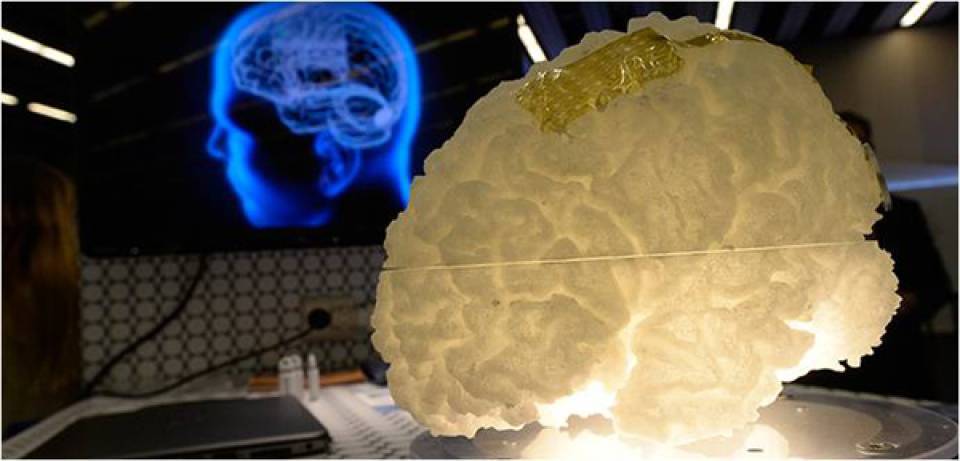The unique combination of graphene’s properties, such as high mechanical flexibility, biocompatibility, and ability to transport electricity facilitates that graphene can present great advantages as material for brain interfaces.
A research leading to biomedical applications and brain-machine interfaces
The graphene electronic sensors for the brain shown at the MWC have been developed thanks to an interdisciplinary collaboration between the research Groups led by the ICREA Research Prof Jose Antonio Garrido from the Institut Català de Nanociència i Nanotecnologia (ICN2), who started this research line at the Technische Universität München (TUM), the CSIC Tenured Scientist Dr. Rosa Villa, from the Centro Nacional de Microelectrónica (CNM-IMB-CSIC) and CIBER-BBN, and Dr. Maria Victoria Sánchez-Vives, ICREA Research Professor at IDIBAPS and head of the Systems Neurosciences IDIBAPS team. The basic research led by these researchers offers exciting opportunities of translation into human applications through their interaction in the context of the Graphene Flagship and the Barcelona Institute of Science and Technology, participated by ICN2.
Based on state-of-the-art microfabrication technologies, the devices consist of arrays of graphene microsensors (approx. 10 µm x 10 µm) assembled on flexible polymeric substrates that adapt to the morphology of the brain surface. Each sensor, in a so-called transistor configuration, detects very small changes in electrical activity in its vicinity. Thus, the electrical activity generated by the neurons in the brain is detected as small changes in the conductivity of the graphene sensor.
These devices are currently being used to study slow wave sleep and epilepsy in animals with the graphene sensors implanted on the surface of their brain, enabling researchers to simultaneously record the electrical activity from different regions of the cortex. The results may be of great importance for the improvement of systems for recording and stimulation in the human brain.
The early detection of an epileptic crisis could be possible in patients suffering from epilepsy and implanted with these sensors. The implanted device on the cortex would alert the patient by, for instance, sending an alarm signal to an external mobile device. In addition, the alarm could also alert a medical centre or an ambulance. The technology of flexible graphene sensors lends itself to other biomedical uses in which relevant information needs to be obtained from the cerebral cortex, such as neuroprosthetics for brain-machine interfaces to improve communication or to control artificial limbs.
The technology developed using graphene flexible sensors can also enable future applications for innovative Brain-Machine Interfaces. This ambitious objective could lead to a more efficient communication between humans and artificial electronic systems.
More information:
For more information about IDIBAPS participation in the Graphene Flagship follow the link.
For further information, watch the animation about the sensors on Youtube.
Information source: Institut Català de Nanociència i Nanotecnologia (ICN2)

